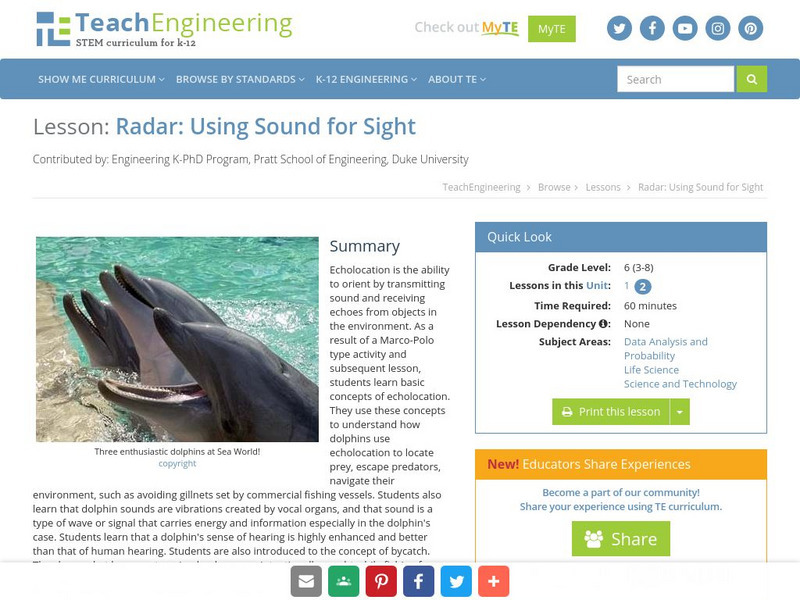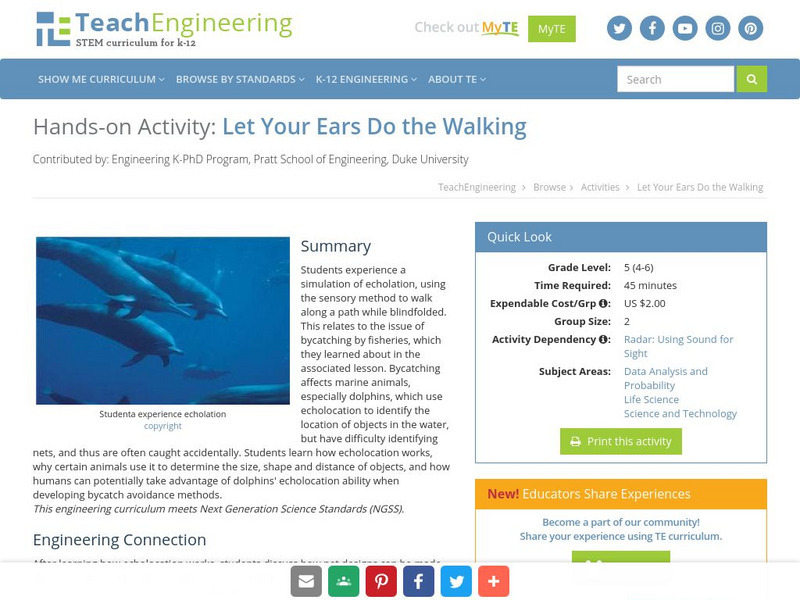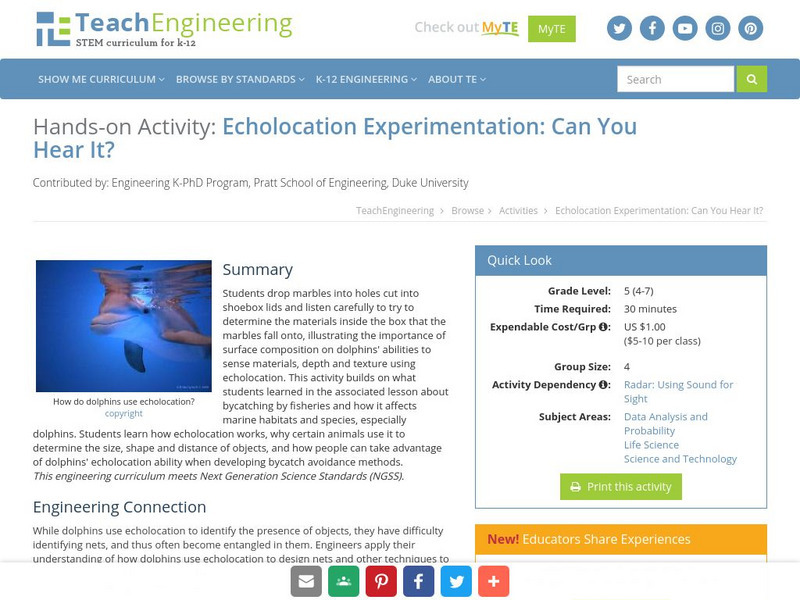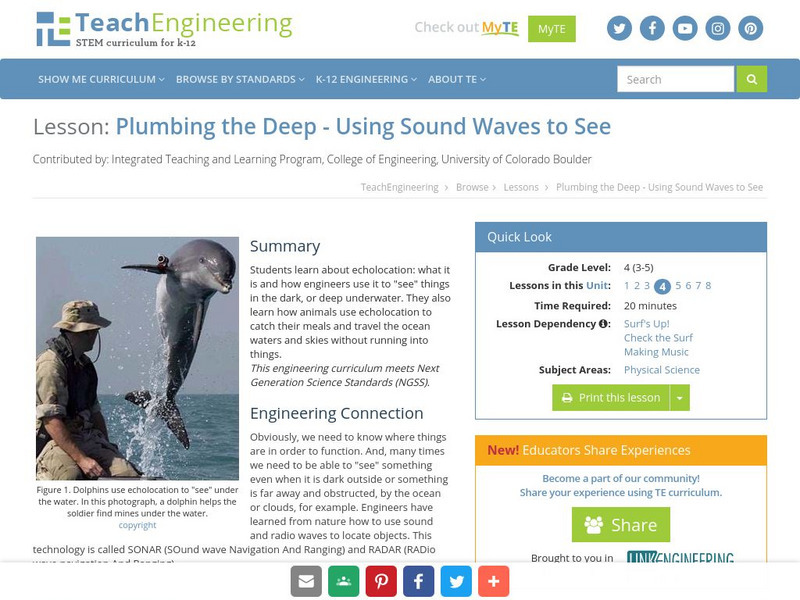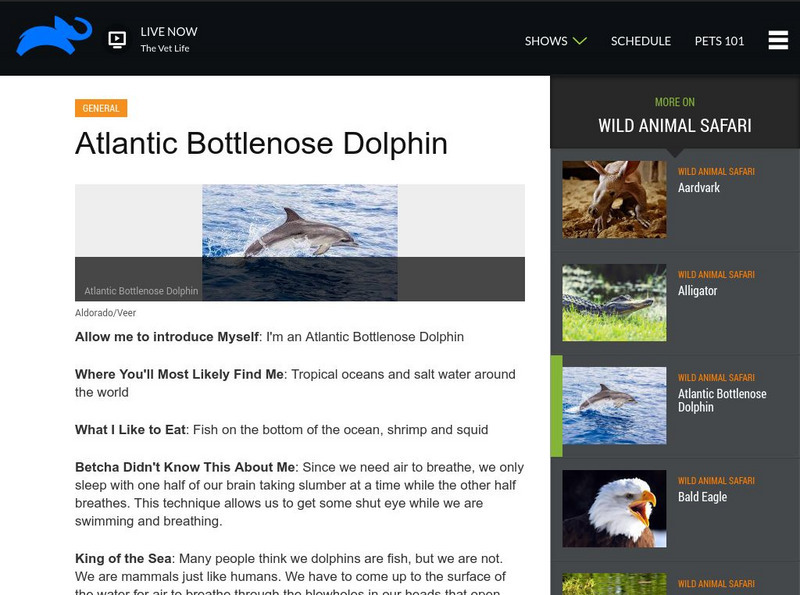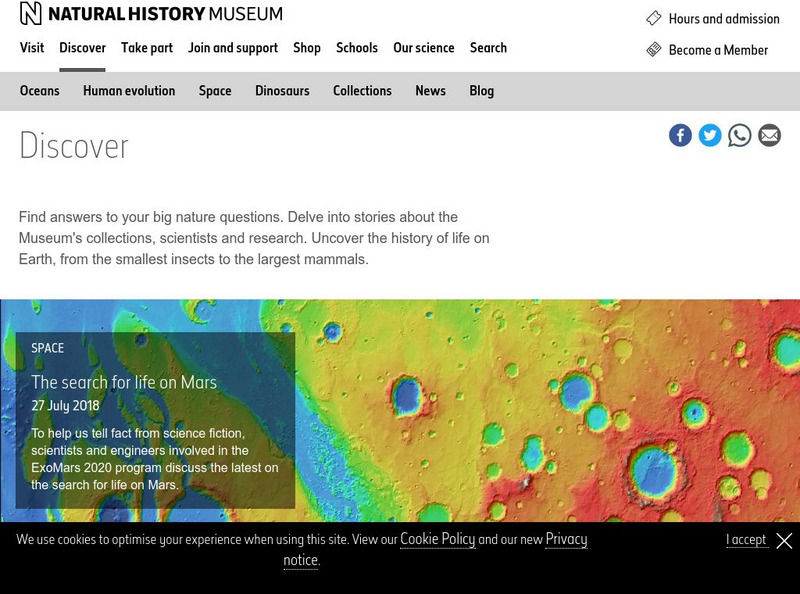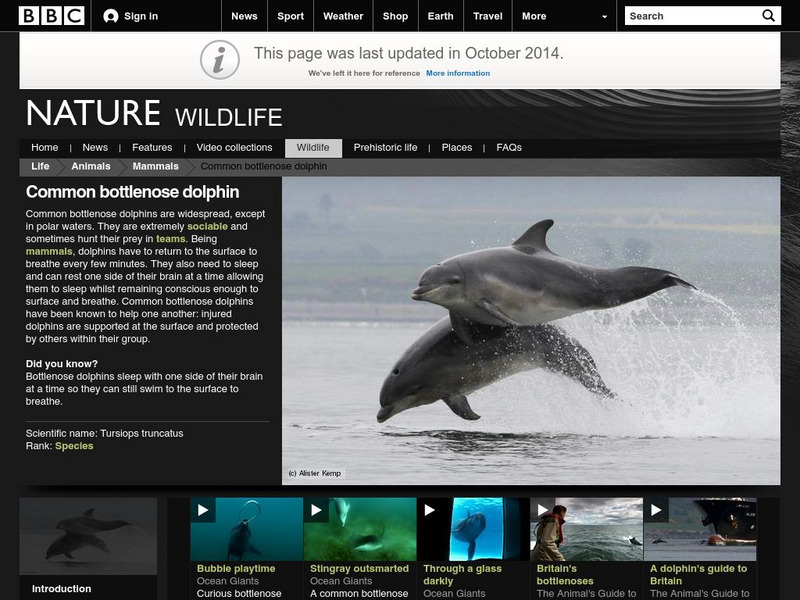TeachEngineering
Teach Engineering: Sound for Sight
Echolocation is the ability to orient by transmitting sound and receiving echoes from objects in the environment. As a result of a Marco-Polo type activity and subsequent lesson, students learn basic concepts of echolocation. They use...
TeachEngineering
Teach Engineering: How Does an Ultrasonic Sensor Work?
Students learn how ultrasonic sensors work, reinforcing the connection between this sensor and how humans, bats, and dolphins estimate distance.
Unite for Literacy
Unite for Literacy: Mystic Aquarium: Bats Dare to Be Different
Read about bats' characteristics, habitat, diet, behavior, and their unique hearing ability called echolocation. You'll also learn why they are important to humans, the threats they face, and what you can do to help them. Includes audio...
Sea World Parks & Entertainment
Sea World: Bottlenose Dolphins
Outlines the characteristics of the bottlenose dolphin, including classification, habitat, behaviors, and conservation.
Library of Congress
Loc: Everyday Mysteries: Why Do Bats Live in Caves?
Ever wonder why bats live in caves? Or why bats don't fly into objects at night? This article describe why bats thrive in the protected shelter a cave provides. It also explains how bats use echolocation to locate food and avoid obstacles.
Scholastic
Scholastic: All About Dolphins
Dolphin expert Dan Odell answers basic questions about dolphins and their lives.
TED Talks
Ted: Ted Ed: How Whales Breathe, Communicate and Fart With Their Faces
Comparative anatomist Joy Reidenberg explains how majestic whales "fart with their face" (a process more formally known as echolocation) to send their unique sounds through the water. [6:24]
PBS
Pbs Teachers:borneo: A Batty Mapping Method
Explore how bats use echolocation to find prey by using echoes to map the direction and distance to various echo sources in their surroundings. Determine the minimum distance at which an echo can be heard and the distance to an echo source.
Other
Fishin for Facts Library
A comprehensive site that includes a wealth of information on whales, sharks, penguins and squid.
PBS
Idaho Public Education: Bats
Explore this site to understand facts and general information about bats. Learn about bat wings and houses, why they hang upside down, echolation, and more! Classroom activities and games are also included.
TeachEngineering
Teach Engineering: Let Your Ears Do the Walking
In the previous lesson, students learned about the issue of bycatching by fisheries and how it affects marine habitats. Dolphins are one of the main species affected by bycatching. Dolphins use echolocation to identify the location of...
TeachEngineering
Teach Engineering: Can You Hear It?
In the previous lesson, students learned about the issue of bycatching by fisheries and how it affects marine habitats. Dolphins are one of the main species affected by bycatching. While dolphins can use echolocation to identify the...
TeachEngineering
Teach Engineering: Plumbing the Deep: Using Sound Waves to See
In this instructional activity, students learn about echolocation: what it is and how engineers use it to "see" things in the dark, or deep underwater. Also, they learn how animals use echolocation to catch their dinner and travel the...
Discovery Education
Animal Planet: Atlantic Bottlenose Dolphin
This site provides information about the Atlantic Bottlenose Dolphin including what they eat and how they find food using a process called echolocation.
Read Works
Read Works: Bat News
[Free Registration/Login Required] This nonfiction passage describes the job of a chiroptologist, a bat scientist. This passage reinforces essential reading comprehension skills. Opportunities for vocabulary acquisition are also...
Read Works
Read Works: A Real Life Bat Man
[Free Registration/Login Required] This passage describes the responsibilities of a chiroptologist, a person who studies bats for a living. This passage is a stand-alone curricular piece that reinforces essential reading skills and...
CK-12 Foundation
Ck 12: Physical Science: Ultrasound
[Free Registration/Login may be required to access all resource tools.] What ultrasound and echolocation are, and how sonar and ultrasonography are used.
TeachEngineering
Teach Engineering: Echolocation in Action!
In this activity, students will experience echolocation themselves. They actually try echolocation by wearing blindfolds while another student makes snapping noises in front of, behind, or to the side of them.
Other
Contra Costa County Office of Education: Bats: Why Should You Care?
At this site, provided by the Contra Costa County Office of Education, you can get the facts on bats and their environment.
Other
The Dolphin Institute: For Kids!
Great interactive site for elementary and middle school students. Learn about the order cetaceans, mysticetes, odontocetes, (baleen whales and toothed whales) and bottlenose dolphins. Then play some interactive games after learning about...
Natural History Museum
Natural History Museum: The Secret Life of Bats: Bat Senses
Part of an online exhibit on bats, this section focuses on bat senses: sight, olfaction (smell), echolocation, and hearing.
Enchanted Learning
Enchanted Learning: Sperm Whale
This clear and concise resource on sperm whales includes a diagram and information on its diet and echolocation.
BBC
Bbc: Nature Wildfacts: Amazon River Dolphin
Click here at the British Broadcasting Corporation to learn more about the Amazon river dolphin and to examine some nice photos of them.
BBC
Bbc: Nature Wildfacts: Bottlenose Dolphin
Just about everyone has watched a Bottlenose dolphin perform on film or in real life. But what else do you know about them? Read this detailed fact sheet to find out more about the Bottlenose.


